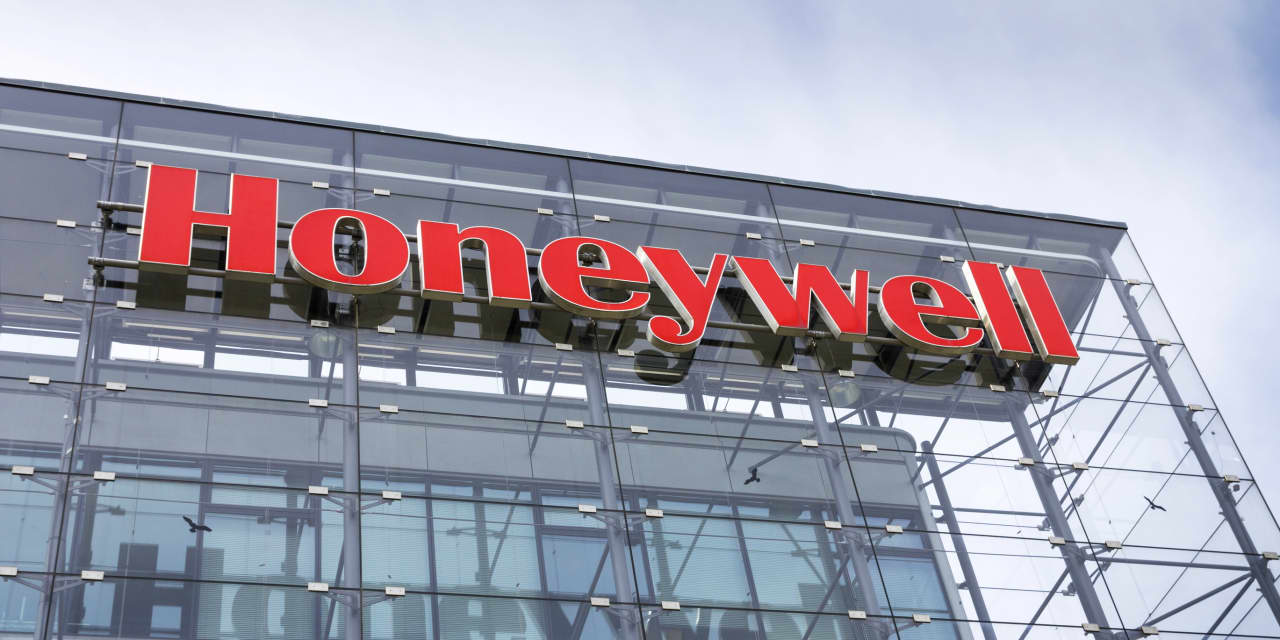Investors in
Honeywell International
could soon find out whether a slate of new names and a potential shift in focus can boost a stock price.
Tuesday, the industrial company said it was reorganizing its business segments and adjusting its leadership. The issue of business segments, how a company categorizes its operations, isn’t usually a focal point for investors. Who is running the show, on the other hand, always matters.
The changes are intended to help boost growth by shifting the organizational focus a little. Investors care about growth too.
“We are committed to delivering differentiated, profitable growth,” said Honeywell Chief Executive Officer Vimal Kapur in a news release. “We plan to organize our businesses around three powerful megatrends, each of which is underpinned by our robust digitalization capabilities and solutions. This simplified structure will enable Honeywell to realize synergies that will accelerate our innovation playbook, leverage our financial strength, and unlock greater value through our Accelerator operating system.”
Kapur took over from former CEO Darius Adamczyk on June 1 after being named to the top post back in March. Now he is putting his stamp on the organization.
The three megatrends Kapur is referring to are automation, aviation, and the energy transition. Multiple parts of the Honeywell business stand to benefit.
Right now, before the shake-up goes through, the company has four segments: Aerospace; Building Technologies; Performance Materials and Technology; and Safety and Productivity Solutions.
The easiest to understand is the aerospace segment: the business of producing parts and equipment for planes. That segment generated $11.8 billion of revenue in 2022, with $2.1 billion from new parts, $5.1 billion in aftermarket parts, and $4.6 billion in sales to the defense and space industries.
Building Technologies makes the controls and software required to make commercial buildings, be they hospitals, schools, or office towers, work. It generated $6 billion in 2022 sales. About $3.6 billion came from hardware, with the rest from software and solutions.
Process Materials and Technologies makes catalysts and offers other products and services for the energy business. It generated $10.7 billion in 2022 sales.
Safety and Productivity Solutions generated about $6.9 billion in 2022 sales. That includes masks, equipment for sensing, and warehouse automation hardware and software.
Post-reorganization, there will still be four segments, all with new names. Aerospace Technologies, essentially the old aerospace segment, will seek to address and benefit from the efforts to make jets more sustainable. Lowering the carbon emissions of planes isn’t easy. Aviation fuel made from plants and waste fats, plus more efficient engines, could help.
Building Automation will essentially be the old Building Technologies. The megatrend in play here is also the shift toward sustainability, as seen in efforts to allow building operators to use less energy and save money in the process.
Industrial Automation will combine parts of the Safety and Productivity Solutions business with elements of the Performance Materials business. Industrial automation is about saving labor as businesses move manufacturing back to the U.S.
The Industrial Automation business is getting larger as a result of the shake-up, making it about as big as the aerospace business.
The fourth segment is Energy and Sustainability Solutions, whose core is the catalyst and energy products business—the elements of the former Performance Materials segment that aren’t being wrapped into Industrial Automation. The transition from fossil fuels to electricity and hydrogen-based power will give that business room to grow for decades to come.
The names are different, but the work to be done is more or less the same as it was before the shake-up was disclosed.
Still, there is new leadership. Lucian Boldea, the current CEO of Performance Materials, will lead Industrial Automation. Ken West will serve as president and CEO of the Energy and Sustainability Solutions segment, moving from his current role as president of Honeywell’s materials business, which is part of Performance Technologies.
Billal Hammoud, who runs the current Building Technologies segment, will run Building Automation. Aviation will be led by Jim Currier, the current chief of Aerospace.
How much the reshuffle will help the business isn’t clear. Honeywell stock was down 0.3% in early trading Tuesday, while the
S&P 500
and
Dow Jones Industrial Average
were 0.5% and 0.3% higher, respectively.
Along with the changes, Honeywell reiterated its financial forecasts for the full year. It still expects to earn between $9.05 and $9.25 a share, while the consensus call on Wall Street is for $9.16 in per share profit.
Investors always care about financial guidance.
Corrections & Amplifications
Honeywell’s CEO is Vimal Kapur. In an earlier version of this article, his last name was misspelled in two references.
Write to Al Root at allen.root@dowjones.com
Read the full article here



 Casino Welcome Bonus
Casino Welcome Bonus